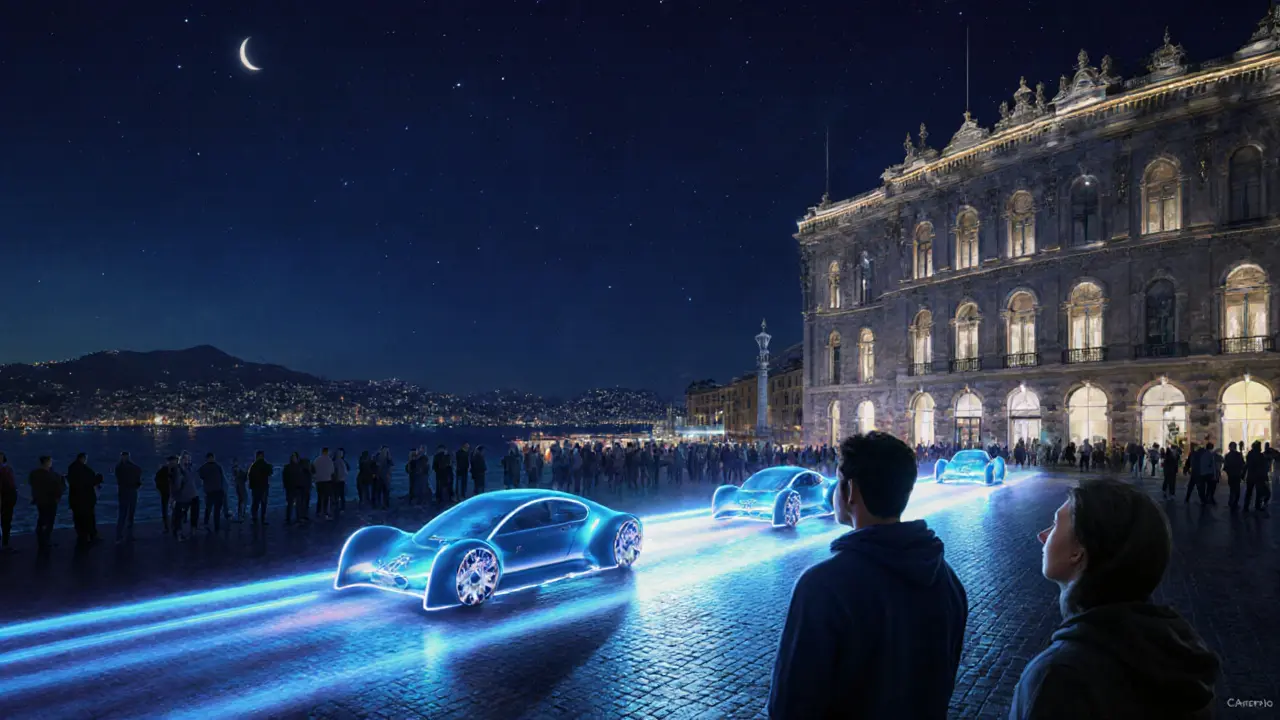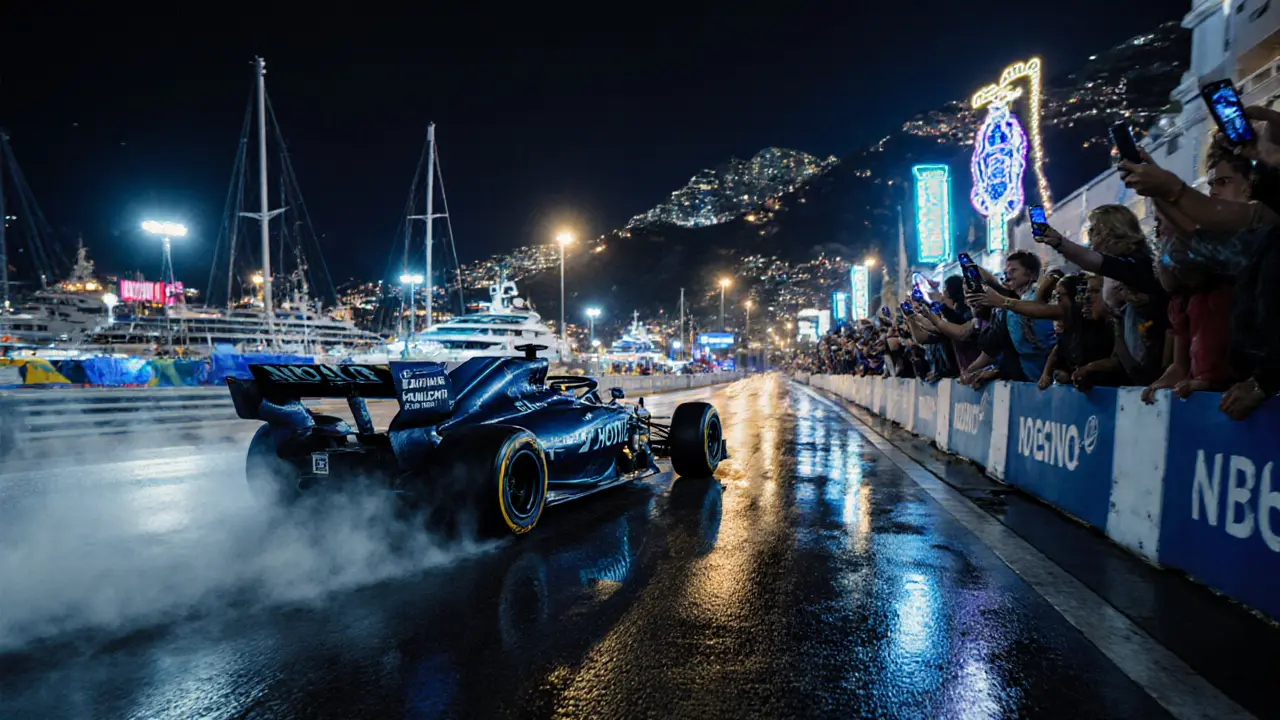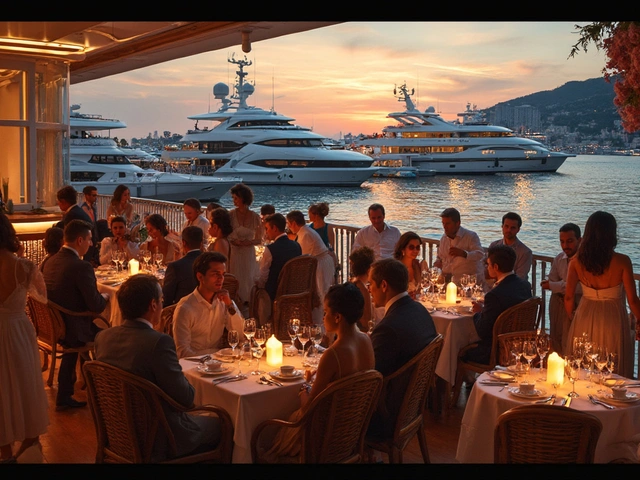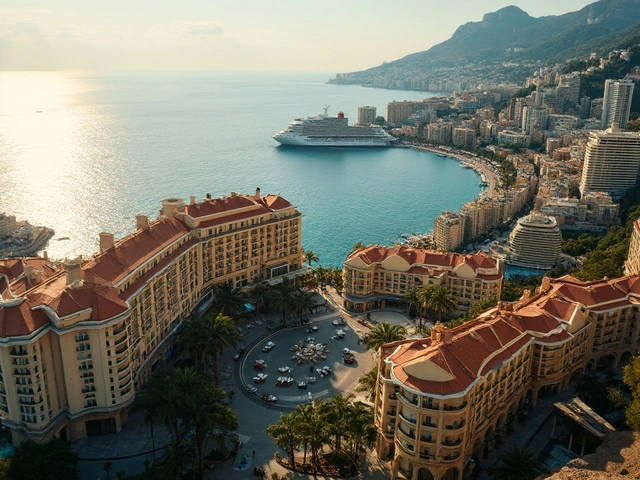When the sun sets over Monte Carlo during the Monaco Grand Prix, the streets don’t just light up-they come alive with the roar of engines, the scent of burning rubber, and the hum of millions of hearts beating in sync with a 1000-horsepower machine. This isn’t just a race. It’s the only Formula 1 event where the track doesn’t close for the night. The cars keep going. The fans keep watching. And the city? It doesn’t sleep. It speeds up.
The Track That Never Quits
The Circuit de Monaco is the only street circuit on the F1 calendar that runs entirely through public roads. Unlike other tracks that shut down after daylight, Monaco’s layout-narrow, twisty, and lined with barriers just inches from the tires-stays active long after the checkered flag. The race ends around 6 p.m. local time in May, but the energy doesn’t fade. By 8 p.m., the same streets are packed with VIP parties, yacht gatherings, and pop-up fan zones where drivers from the day’s race mingle with billionaires and celebrities.
There’s no other place on Earth where a Formula 1 car can go from 0 to 180 mph in under five seconds, then turn a 90-degree corner at 60 mph, all while a crowd of 100,000 people watches from a balcony just three feet away. And after the race? The same drivers who were fighting for pole position are now sipping champagne on a yacht anchored just offshore, the lights of the harbor reflecting off their helmets like stars.
Why ‘Faster Nights’ Isn’t Just a Slogan
The phrase ‘faster nights’ isn’t marketing fluff. It’s a reality. The Monaco Grand Prix isn’t just about daytime racing-it’s about how the entire city transforms after sunset. The night isn’t a break from the race; it’s the extension of it.
Since 2023, the FIA has allowed teams to run post-race simulation sessions on the same track between 9 p.m. and midnight, using modified electric prototypes. These aren’t full-speed runs. But they’re close enough to make the streets vibrate. Local residents have learned to tune out the low-frequency thrum of electric motors. Tourists line the barriers with phones out, recording the eerie glow of the prototype cars as they carve through the tunnel and around the Casino Square.
And then there’s the data. Teams use the night to analyze telemetry from the day’s race in real time. Engineers work in pop-up command centers set up in hotel suites overlooking the track. They’re not just tweaking setups-they’re predicting how the same corners will behave under different tire temperatures, humidity levels, and even wind patterns from the Mediterranean. The night isn’t downtime. It’s the most critical part of the race weekend.
The People Who Keep the Night Alive
Behind every faster night are the people who make it possible. The track marshals who stay on duty until 2 a.m. to clear debris. The local police who reroute traffic without a single complaint from residents. The bartenders at the Monte Carlo Bar who serve 200 cocktails an hour between 10 p.m. and 2 a.m., all while knowing that one of the drivers walking in might be the same one who crashed at Mirabeau three hours earlier.
One mechanic from Red Bull told me last year, ‘We don’t sleep during Monaco weekend. We just change our rhythm. The track doesn’t stop. Neither do we.’ He was 24. He’d been working on F1 cars since he was 18. He’d never missed a Monaco race. He didn’t plan to.
The city itself adapts. Restaurants open later. Hotels raise prices by 400%-but they’re still booked a year in advance. Even the taxis change. In normal weeks, Monaco has 300 licensed cabs. During Grand Prix weekend, that number jumps to 1,200. Many are electric, rented from companies that specialize in ‘F1 shuttle service.’ You can book one to take you from the port to the pits, and the driver will know exactly which team you support just by the color of your shirt.

The Science Behind the Speed After Dark
It’s not just adrenaline. There’s real science behind why Monaco feels faster at night.
First, the air. The Mediterranean coast cools down after sunset. Cooler air is denser, which means more oxygen for the engines. Even though the race cars use hybrid power units, the internal combustion part still benefits. Teams have found that lap times can drop by 0.1 to 0.3 seconds in the evening compared to midday, purely due to temperature.
Second, the tires. Pirelli’s C4 compound, used in Monaco, performs best between 85°F and 105°F. During the day, the asphalt hits 120°F. By 8 p.m., it’s down to 95°F-perfect. Drivers report better grip, less degradation, and more confidence braking into Sainte-Dévote.
Third, the human factor. The human brain processes motion differently in low light. The blur of the cars, the flicker of lights, the silence between engine bursts-it creates a sense of speed that’s more intense than daylight. Studies from the University of Nice show that spectators perceive lap times as 12% faster during nighttime sessions, even when they’re identical to daytime laps.
What You Miss If You Only Watch the Race
If you think the Monaco Grand Prix is just about the 78 laps on Sunday afternoon, you’re missing the whole story.
On Friday night, the paddock opens to the public for the first time. Fans can walk through the garages, see the cars up close, and even take selfies with the crew members. On Saturday, after the qualifying session ends at 5 p.m., the track becomes a stage. DJs spin from the top of the tunnel. A floating stage is moored near the harbor, where past champions like Ayrton Senna’s son and Lewis Hamilton’s brother perform acoustic sets.
And then there’s the 3 a.m. ritual. Every year, a small group of die-hard fans gathers at the Tabac corner. They bring blankets, coffee, and a portable speaker. They don’t watch the track. They listen. The silence between engine revs is as important as the noise. They say if you listen long enough, you can hear the difference between a Ferrari’s exhaust note and a Mercedes’ hybrid whine-even in the dark.

Where to Experience Faster Nights-If You’re Not on the Grid
You don’t need a VIP pass to feel the faster nights. Here’s where to be:
- La Rascasse Bar - Right at the final corner. The view is straight down the pit straight. You can hear the cars hit 200 mph just feet from your table.
- Yacht Club de Monaco - The terrace is open to the public after 8 p.m. on race weekend. Bring cash. Drinks cost €80, but you’ll see three drivers before midnight.
- Place du Casino - The square transforms into a live broadcast zone. Big screens show the race, but the real show is the crowd. People dance, argue, hug, and cry as the laps tick down.
- Hotel de Paris Rooftop - Book a cocktail at sunset. The view includes the tunnel, the harbor, and the entire backstretch. It’s the only place where you can watch a car disappear into the tunnel and reappear 30 seconds later, like magic.
The Legacy of Faster Nights
The Monaco Grand Prix has been running since 1929. It’s the oldest race on the calendar. But it’s never felt more alive than it does now. The faster nights aren’t just about speed. They’re about connection. Between driver and machine. Between fan and city. Between past and future.
Every year, a new generation of drivers comes to Monaco. They come for the challenge. They stay for the night. Because once you’ve felt the rumble of a Formula 1 car pass by in the dark, with the scent of saltwater and gasoline in the air, you never want to race anywhere else.
And if you’ve never been? You’re not late. You’re just not there yet.
Is the Monaco Grand Prix really held at night?
No, the main race still takes place on Sunday afternoon, typically starting around 3 p.m. local time. But the term ‘faster nights’ refers to the extended, high-energy activities that happen after the race ends-from post-session simulations and fan events to the electric prototypes that run on the track until midnight. The entire city pulses with speed long after the checkered flag.
Can the public walk on the Monaco track after the race?
Yes, on Saturday and Sunday nights, sections of the track are opened for public walking. The FIA allows fans to stroll through the tunnel, past the swimming pool complex, and along the harbor front. It’s a rare chance to walk where F1 drivers race at 200 mph. Just be prepared for crowds-thousands do it every year.
Why are lap times faster at night in Monaco?
Cooler air and track temperatures improve tire grip and engine efficiency. The asphalt drops from over 120°F during the day to around 95°F at night, which is the sweet spot for Pirelli’s Monaco tires. Teams have recorded lap time improvements of up to 0.3 seconds in evening sessions, even with identical car setups.
Do F1 drivers really party after the race?
Some do, some don’t. But most are too exhausted to celebrate hard. Drivers who finish in the top five often attend the official podium party, which ends by midnight. Those who had mechanical issues or crashed may skip it entirely. Still, it’s common to see drivers at the Yacht Club or La Rascasse after 10 p.m.-not partying, but talking, analyzing, and unwinding with engineers and friends.
What’s the best spot to watch the Monaco Grand Prix at night?
The best night views are from the Hotel de Paris rooftop or the terrace of the Yacht Club de Monaco. Both offer uninterrupted views of the tunnel, the harbor, and the final straight. If you’re on a budget, head to Place du Casino after 8 p.m. There are giant screens, live commentary, and a crowd that turns the square into a festival. You won’t see the cars up close, but you’ll feel the energy.
Are there electric cars on the Monaco track at night?
Yes. Since 2023, FIA has permitted teams to run modified electric prototype cars on the track between 9 p.m. and midnight on Friday and Saturday nights. These aren’t F1 cars-they’re lightweight, silent, and designed to test tire wear and aerodynamic data under low-light conditions. They’ve become a fan favorite, with thousands gathering to watch them glide through the tunnel like ghosts.




